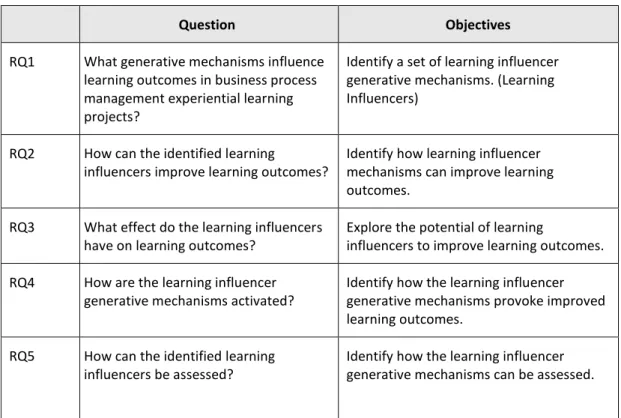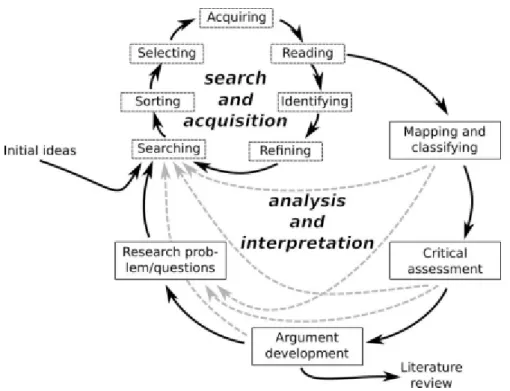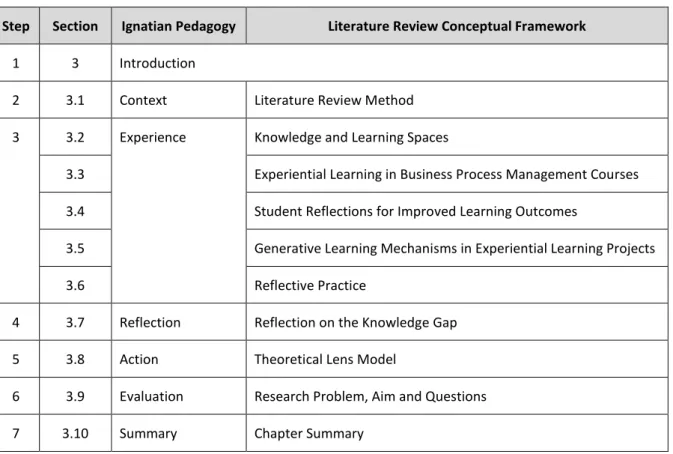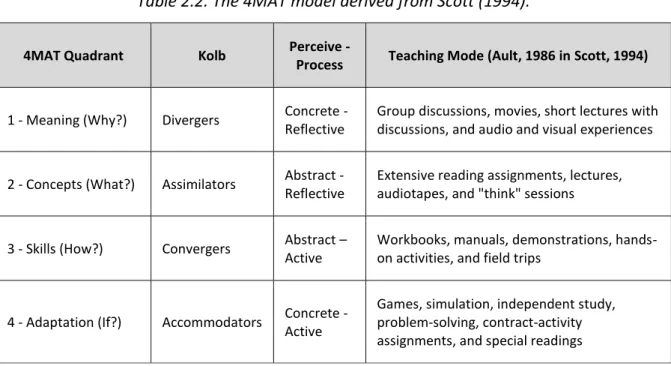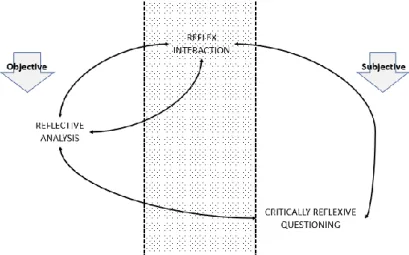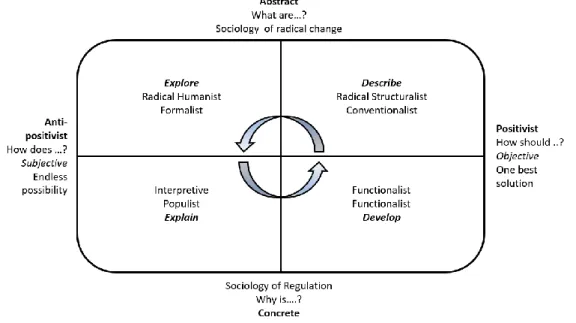Potential mechanisms in this study were identified by analyzing the reflections of students who participated in experiential learning projects during business process management education. Potential mechanisms in this study were identified by analyzing the reflections of students who participated in experiential learning projects within the framework of business process management education.
Research Problem
Research Paradigm
Aim of the Study
Research Questions and Research Objectives
The sub-questions are listed in Table 1.1 together with the relevant objective for each question.
Rationale
Previous Research
Almost a century later, there remains a lack of understanding of how improved learning outcomes are brought about through reflection (Perusso et al., 2020). This leads to the co-creation of value between the educational institution and the student (Vargo et al., 2008).
Research Design and Methodology
Research Instruments
Research Process
Analysis and Interpretation of Data
When generating learning influencers, the influence of applied effort was observed to dominate the reflections. How the generative mechanisms of learning influence are activated and secondly, how the results of the learning influence can be evaluated.
Researcher's Involvement
To be truly objective, we must remove ourselves from the scene and not hide our involvement. Pirsig (2014) used the analogy of a knife used to separate experiences that cause something to be killed in the process.
Limitations of the Study
In 2018, during the final cycle of the study, I taught students and assessed business process management topics in the course. This study is moderated by my belief that situations are contextual and solutions are always tempered by "it depends".
Value of the Study - Contribution
Outline of the Study
In Chapter 7, the findings of the four action research cycles are discussed with support from the literature. The leading disruptor observed in the business process management project is the presentation of concrete experiences of the students.
Literature Review Method
Reflection on the method of the literature review is therefore essential and must be included in the systematics. Part of literature reviews is to synthesize the literature, for which Besson and Rowe (2012) recommend a conceptual framework presented at the beginning of the literature review (Rowe, 2014).
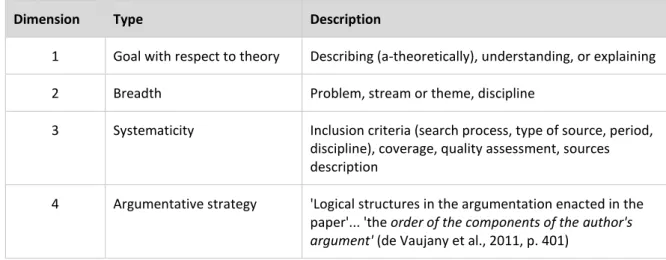
Knowledge and Learning Spaces
Tacit knowledge integrates a functional relationship (or gestalt) between knowledge that is in bodies and minds, such as a technical skill that one person cannot fully explain to another person (marginal elements) and the thing or things that the person consciously focuses on ( focal consciousness) (Polanyi, 1969). Although tacit knowledge is difficult to articulate, explicit knowledge carries awareness and can be explained (Polanyi, 1969).
Experiential Learning in Business Process Management Courses
Business Process Management
However, worldwide there is a lack of understanding of the relevant competencies that business process management students need to learn (Ravesteyn et al., 2008). This hinders teachers from designing courses that provide students with the appropriate competencies (Bandara, Rosemann et al., 2007; E. Scott et al., 2002).
Business Process Management Skills Development
Business Process Management Training
Business Process Management Education
Exacerbating the problem is the lack of a holistic business process view (Malinova & Mendling, 2018; Rosemann & vom Brocke, 2010) with a persistent lack of clarity about the relationship between skills and competencies (Dörge, 2010). Rosemann and vom Brocke (2010) observe that business processes with technical and operational skills are essential for business process management.
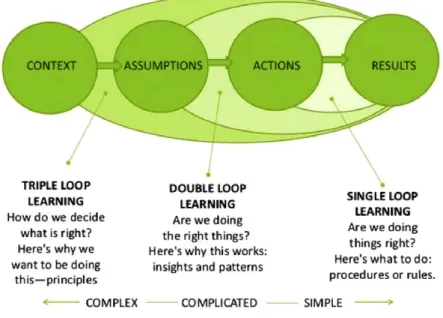
Experiential Learning for Business Process Management Education
44 Raelin (2007a) takes a pragmatic position and includes practice in knowledge construction within a practice-based learning model. The purpose of the practice-based learning model is to facilitate dynamic learning rather than impart knowledge.
Experiential Learning: Theoretical Underpinnings
Disruption leading to reflection implies an awareness of disruption, which occurs when habitual practices are interrupted (Schatzki, 2016). Recalling Bourdieu, the field encourages individuals with habitus to act according to the doxa of the field until a crisis occurs (Koch, 2020; Wacquant, 1989).
Learning Theories - Situating Experiential Learning
Constructivism is based on Piaget and considers knowledge about the surrounding world to be a combination of physical experiences and cognitively reconstructed experiences (Bélanger, 2011; Hean et al., 2009). An alternative view based on Vygotsky believes that constructivism emerges through social interaction, where learning is cognitively constructed from the combined experiences of the learner and other people (Bélanger, 2011; Hean et al., 2009).
Kolb’s Experiential Learning Theory
Miettinen (2000) argues that Kolb combined “the Lewinian tradition of action research and the work of John Dewey to ground his model” (p. 4). Reflection is central to Dewey's reflective model of thinking and action, which is more closely related than Kolb's theory of experiential learning (Miettinen, 2000).
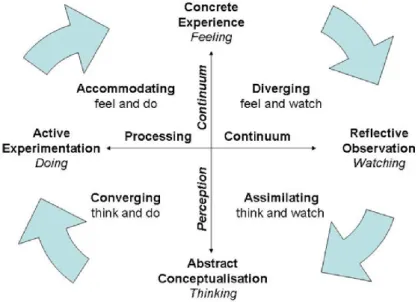
Summary of Experiential Learning in Business Process Management Courses
Like most recent experiential models, assessment is a post-learning element, but Ignatian learning is always considered contextually, unlike Kolb. Ignatian pedagogy reflects on contextualized experience using memory, understanding, imagination and emotion to produce action, evaluated through reflection on its effectiveness, to capture the meaning and value of experiences (Jesuit Institute, 2014).
Student Reflections for Improved Learning Outcomes
Therefore, the service-dominant logic approach (Vargo et al., 2008; Vargo & Lusch, 2016) has been preferred in higher education. Central to the service-dominant logic approach is the co-creation of value between the service provider and the customer (Vargo & Akaka, 2009; Vargo & Lusch, 2016).
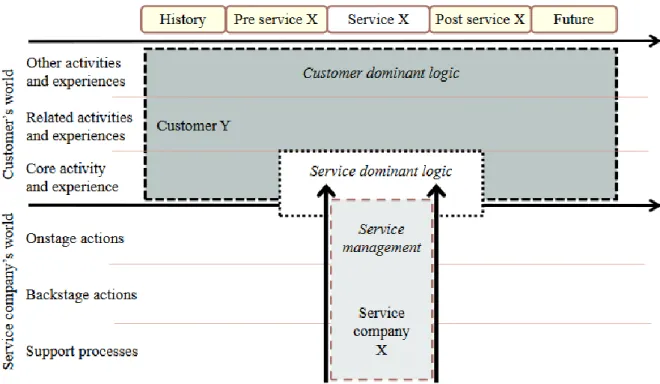
Learning Influence Generative Mechanisms
- Levels of Skill Development
- Four Stages of Competence
- Four Levels of Learning
- Informative and Transformative Learning
- Depth of Knowledge Assessment Mechanism for Experiential Learning
- Summary of Potential Generative Learning Mechanisms
The four levels of Webb's depth of knowledge model resemble Anderson and Krathwohl's (2001) knowledge dimensions, mainly at the lower levels. A comparison between Webb's depth of knowledge model and Anderson and Krathwohl's (2001) knowledge dimensions is presented in Table 2.5.
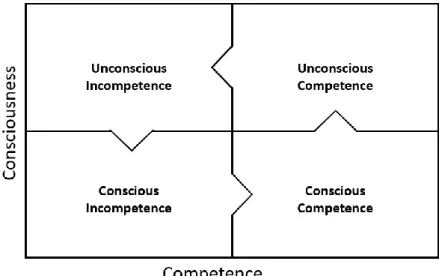
Reflective Practices
- Reflexivity
- Reflective Practice
- Four Levels of Reflection
- Four stages of Learning from Experience Through Reflection
- Action as Theoretical Underpinning of Experiential Learning and Reflexive Practice
- Reflective Practice Summary
Reflexive habits thus lead to action arising from the relationship between reflection and recursion, mediated by a process of change. The combination of the prescriptive nature of Burrell and Morgan's model, Roode's "simplistic one-dimensional approach" (van Zyl, 2015, p. 11) and students' lack of self-reflexivity has brought further criticism of the model (van Zyl, 2015).
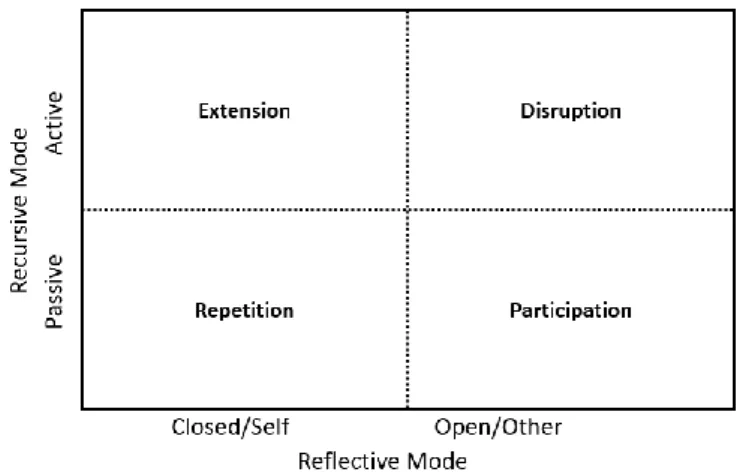
Reflection on the Knowledge Gap
82 learner begins to rely reflectively on himself to apply objective knowledge in multiple situations (Kember et al., 2008). At the contextualist fourth level (Helsing et al., 2004), learners master the ability to apply absolutist knowledge in different contexts through critical reflection (Kember et al., 2008) and meaningful learning (Anderson & Krathwohl, 2001).
Theoretical Lens Model
Rote learning occurs when students can recall relevant knowledge but cannot apply the learning or transfer it to another situation. Meaningful learning is when a student possesses relevant knowledge so that it can be recalled and used to solve current problems as well as transfer the learning to new situations Four Dimensions of.
Research Problem, Aim and Questions
86 The second research question is based on the need to understand reflection as a technique for learning (Daudelin, 1996). The third research question is based on the need to understand the process of reflection (Daudelin, 1996).
Summary
The action research interventions provided insight into the value-creating processes of students experienced in multiple contexts (Grönroos, 2011), which could potentially lead to better learning outcomes. Further literature research resulted in a solution in pragmatistic-critical realism, which combines pragmatism and critical realism (Johnson & Duberley, 2000), for which action research is the recommended methodology (Heeks et al., 2019).
Pragmatist-Critical Realism
At the beginning of the study, critical realism was considered for the underlying philosophy of the study, but insufficient support was found for critical realism in action research studies at the time. The first section of this chapter provides a foundation of the philosophy of pragmatist-critical realism, followed by a review of the research environment.
Foundation of Pragmatism
- Pragmatist Categories
- Pragmatism and Education
- Application of Pragmatism in Research
- The Problem of Pragmatism
- Critical Realism
- Pragmatist-Critical Realism
Rorty equates pragmatism with the practice of making our way in the world (Rorty et al., 2004). These mechanisms may not be observable in the real and actual domains (intransitive) but are observable in the empirical domain (transitive) (Mingers et al., 2013).
Research Setting
Information Systems Courses Setting
The courses had similar content to enterprise systems and business process management at undergraduate and postgraduate level. The focus of the current study was limited to the business process management aspects and the experiential learning project.
Business Process Management Experiential Learning Project
Readers included business process management systems and introductions to cloud computing, open source software, and the use of information technology systems development and operations (commonly called DevOps) in business process management systems. An international consulting firm oversaw the projects and awarded prizes to the top three project teams for undergraduate courses.
Ethics
Summary
Care must be taken to avoid the inherent shortcomings of action research, where practice takes precedence over theory. First, an overview of action research is provided, followed by a discussion of the application of theory to action research.
Action Research
Consequently, action research can be used to mediate the struggle between action and research (Davison et al., 2004). Reflection is central to action research and this study, although for Heeks et al. 2019), reflection is active and indicates reflexivity.
The Role of Theory
Action Research Cycles
For the first two cycles, Schön (1983) offered two forms of reflection – on action and reflection – on action. Instrumental theory (TEUQ) was generated inductively from research data in action research cycles.
Reflexive Thematic Analysis
During the identification of the main generative mechanism (effort) there was overlap with the other generative mechanisms (task, comprehension and quality). Thematic analysis was used to reanalyze the consolidated findings of the four action research cycles using a two-stage approach.
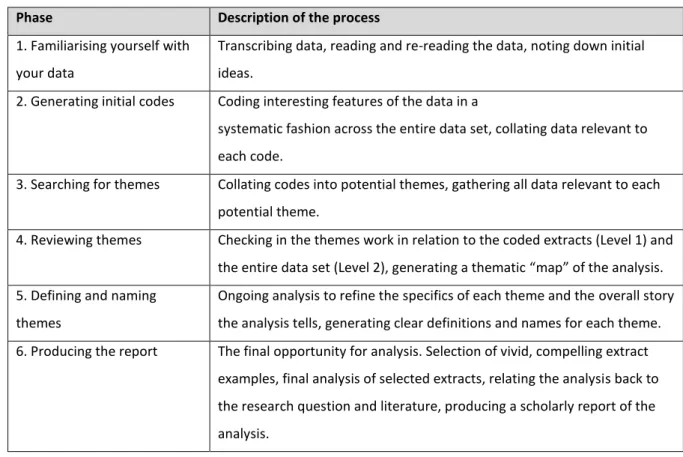
Partial Least Squares Based Structural Equation Modelling
- Formative Measurement Model Assessment
- Structural Model Assessment
- Mediator and Moderator Analysis
- Application of Partial Least Squares Structural Equation Modeling
Outlier weights can also be estimated when collinearity is below the critical level (Hair et al., 2017). A commonly recommended approach is Efron's bias correction and accelerated onset (BCa or bca) method (Hair et al., 2017).
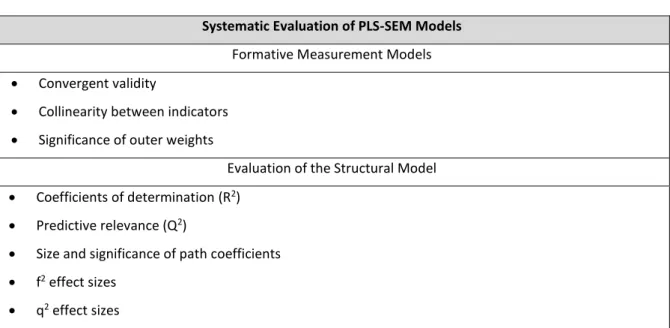
Summary
The findings of the second research question led to the third research question [RQ3], which sought to identify the impact of the learning influencers on learning outcomes. In the initial phase of the action research, the constructs of Kolb's experiential learning (Kolb, 2015) supported by Dewey's transactional approach (Dewey, 1938) were identified, and actions were planned for the study.
ARC1 - Reflection-On-Action
Enhanced Learning - The mechanism of learning is at the heart of education and experiential theory. Implementation of the business process management project as a task was an intrinsic goal of the project.
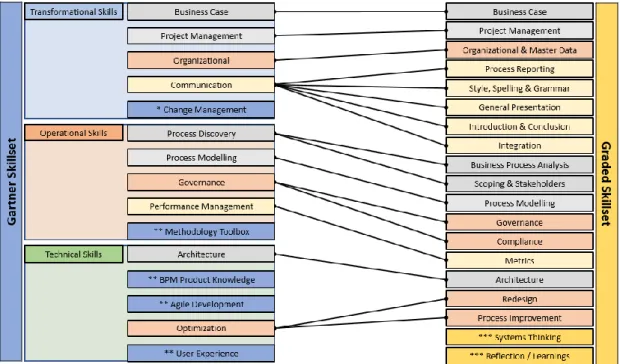
ARC2 - Reflection-in-Action
One student's reflections echoed this view when he commented, “I wanted to 'backdate' the journals, but. The change in ARC2 was to improve the reflection by moving it closer to the students' experiences.
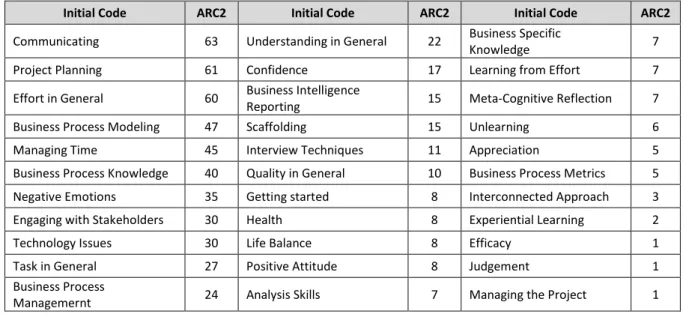
ARC3 – Reflection-for-Action
The analysis of the ARC3 reflections was analyzed using reflexive thematic analysis, as in the previous two cycles. The following is an overview of the progression from performing tasks to making an effort to increase understanding and strive for quality.

ARC4 – All Reflection forms – How Students Reflect with Different Staff
The most notable of these was the reduction in the range of codes for undertaking tasks and tracking quality. A similar pattern of construct strength based on the number of mentions was observed earlier.

Action Cycle Exit
Consolidation of the Action Research Cycles
ARC3 aimed to address the lack of planning by encouraging the students to reflect for action. The analysis identified that although the students changed in the three cycles, as well as their work experience (students compared to early-career employees) and the courses differed (undergraduate and postgraduate), the teaching staff was mainly the same.
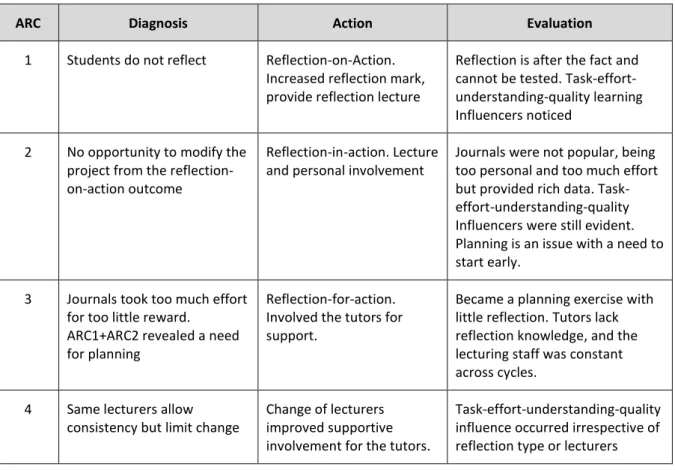
Qualitative Findings Summary
In the research environment, undertaking tasks related to business process management skills while applying effort, business skills, project management, stakeholder engagement, team management and time management. Based on the qualitative results, students were observed to recognize a need to apply effort to complete their project tasks.
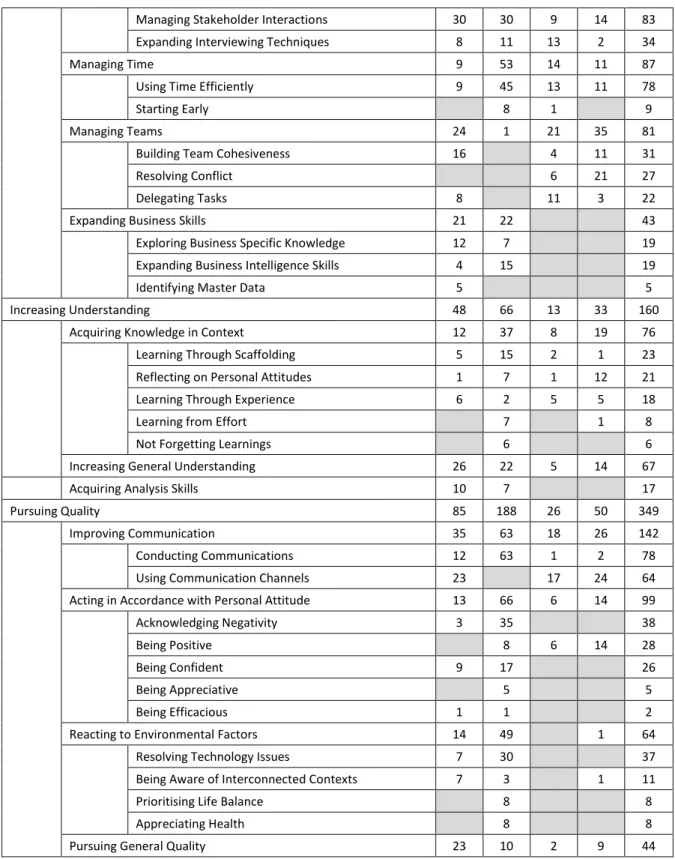
Quantitative Findings
- Partial Least Squares Based Structural Equation Model Definition
- Model Assessment
- Formative Measurement Model Assessment (Outer Model)
- Structural Model Assessment
- Mediator Analysis
The non-parametric bootstrap results shown in Table 5.15 show that both paths from learning influencers were significant. As the path from project to reflection (β=-0.083, p>0.050) was non-significant, no mediation was observed between learning influencers and reflection.
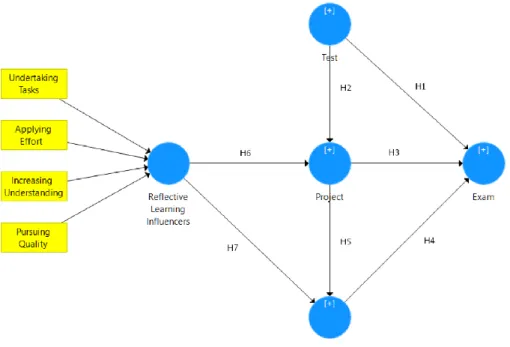
Summary of Quantitative Findings
While significant paths were observed between learning influencers and project, learning influencers and reflection, reflection and exam, test and exam, a series of mediation estimates revealed no mediation in the model.
Summary
Thus, while breadth of knowledge is represented by content, learning should be judged by depth of knowledge. Webb (2002) provides a method for assessing the depth of knowledge using four levels of learning included in the outcome of this study.
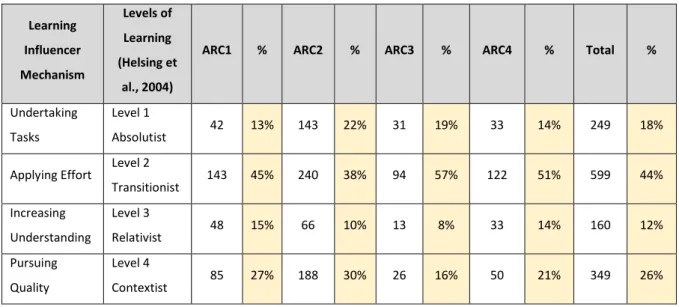
Depth of Knowledge and Learning Mechanisms
Analysis Method
Drivers of Effort
It took effort to prepare for the presentation, and the feedback from the presentation fueled the effort. Thoughtful effort was relativistic and related to learning and reflection about the situation or context.
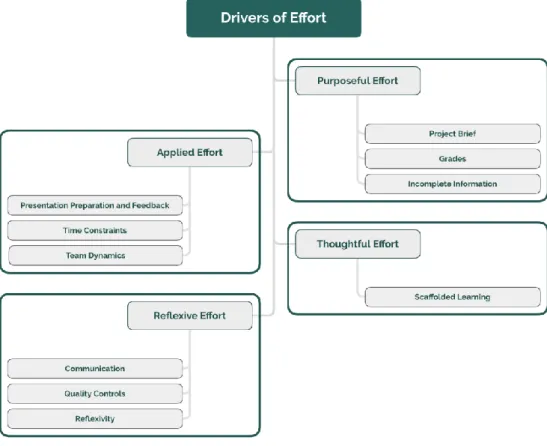
Retrospective-Prospective
Learning Influence Disruptors
Summary
Influencers of Learning Generative Mechanisms
Using Learning Influencer Mechanisms for Improved Learning
Reflection and the Implications of Reflection
Implications for education
Implications of the Learning Influencers
Applying Effort as a Learning Influencer
Disrupted Learning
Disrupted Learning Process
Recommendations for Practice
Summary
Overview of the Study
Reflections on the Study
Contribution of the Study
Recommendations for Practice
Limitations of the Research
Further Research
Final Thoughts
